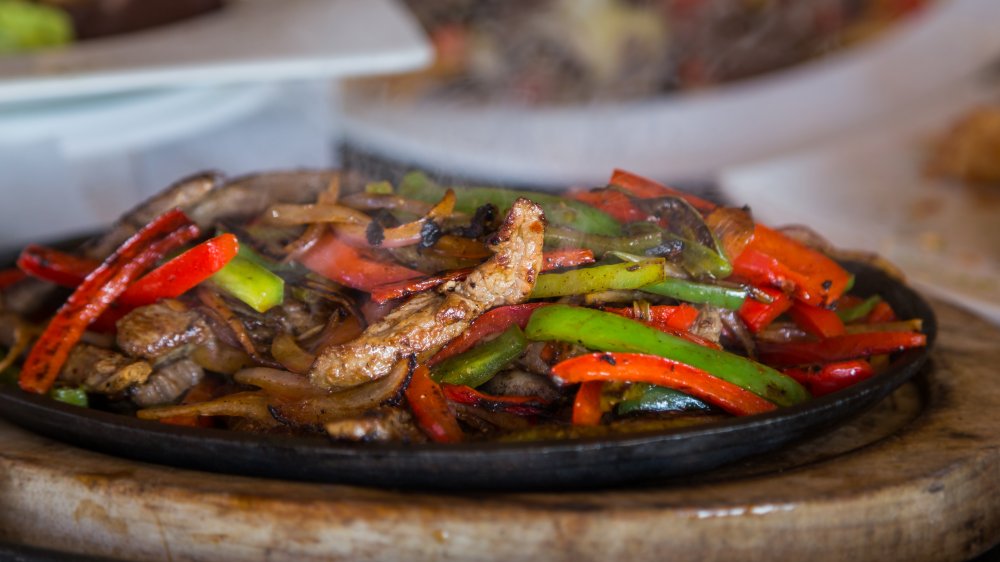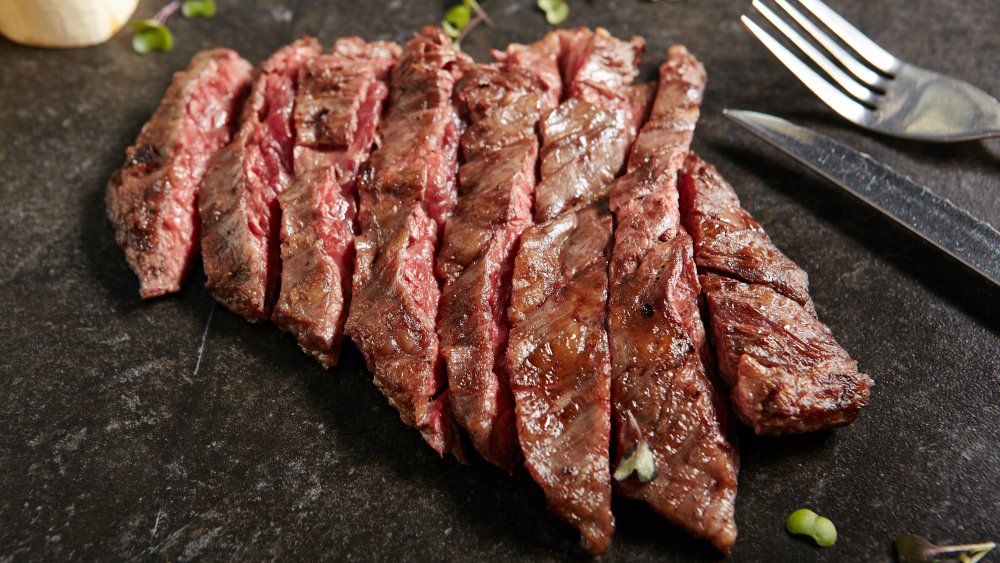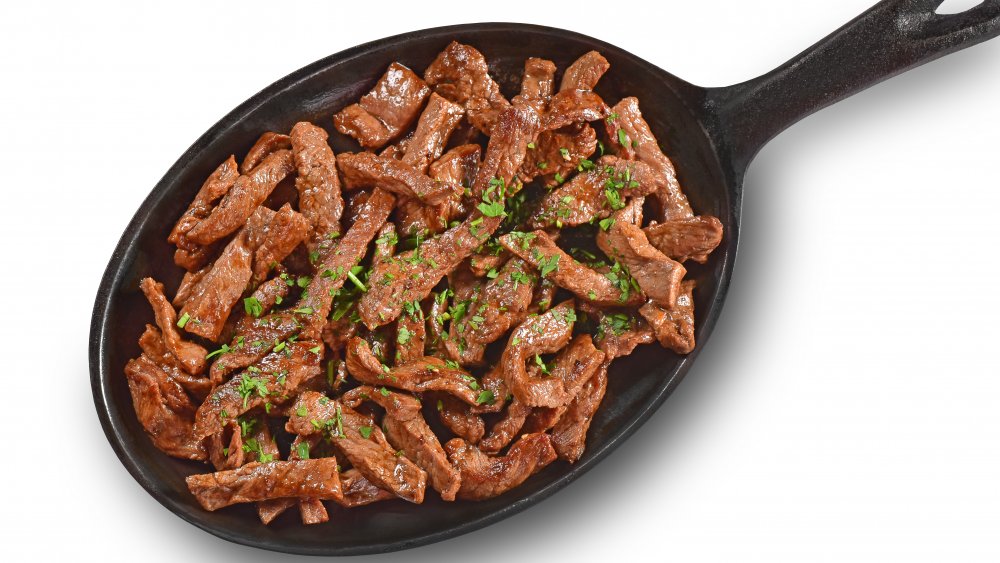You Shouldn't Order Fajitas At A Mexican Restaurant. Here's Why
Ordering fajitas at a Mexican restaurant comes with some strings attached. The stares from other diners as your order is carried to the table with its characteristic plume of billowing smoke, and overemphasized warnings from the server about the very, very hot plate notwithstanding, you must be willing to assemble your entire meal yourself in order to eat it. But, these things, plus the sizzling soundtrack accompanying the juicy steak and charred veggies, are all part of the allure. We like noisy, sizzly food, and we like to get hands-on with our tortillas, meat, and toppings. So, assuming you're up for all the fajita fanfare, is there any reason you should not be ordering them at a Mexican restaurant? Perhaps. These days, the word "fajita" does not necessarily mean what it used to. The literal translation of "fajita" is "little strip", "little belt", or "little sash", referring to the long, thin shape of the skirt steak that serves as the main ingredient (via Texas Fajita Company). But, skirt steak is scarcely found in the fajitas frequently served today. Read on to see what you may be getting instead.
There's no way to be sure what cut of beef you're getting in your fajitas
Many have credited the invention of the fajita to a Texas man named Sonny Falcón AKA The Fajita King, in 1969. However, earlier versions of something called "tacos al carbon" have been described as the original fajita, dating back to the 1930s. Tacos al carbon were popular among Mexican-American cowboys who would wrap tortillas around offal and other discarded cuts of beef the cattle ranchers would offer up in lieu of payment. The Glen Rose Reporter says it was Falcón who was responsible for popularizing the oh-so-flavorful skirt steak as the ideal cut of meat for the fajitas we know and love today. But, skirt steak has become somewhat scarce in the U.S. ever since a 1988 agreement between the U.S. and Japan resulted in the U.S. sending most of our skirt steak overseas (via The Dallas Observer). The skirt steak that remains on our shelves today is high-priced and too big of a spend for many restaurants. Consequently, it's more likely what you're digging into at your favorite Mexican restaurant is a collection of random cuts of beef, packaged and labeled as "beef for fajitas". Yummm... ? But wait, there's more.
The beef in your fajitas may have been chemically altered
So, we've come full circle. Like the cowboys of the 1930s, we're rolling up our sleeves and chowing down on tacos al carbon and calling them fajitas. Except, unfortunately, our meaty fajita fillings have to make a pit stop in a processing plant where they're manipulated into something meat scientists deem more palatable for our evolved taste buds. Grub Street reports sometimes the beefy odds and ends marked as "beef for fajitas", like flaps and hanger steaks, are so tough, they need to be tenderized through the use of enzymes, phosphates, and vacuum tumbler technology. In other words, they're chemically treated. Yikes. Meat scientists continue to experiment with alternate, less-expensive cuts of beef that can take the place of high quality skirt steak, all in the name of hot, sizzly fajitas. Basically, this seems like a lot of unappealing adulteration and perhaps the time for fajita fanfare has passed. If you still can't resist ordering them, maybe just skip the mystery meat and opt for chicken fajitas instead.


